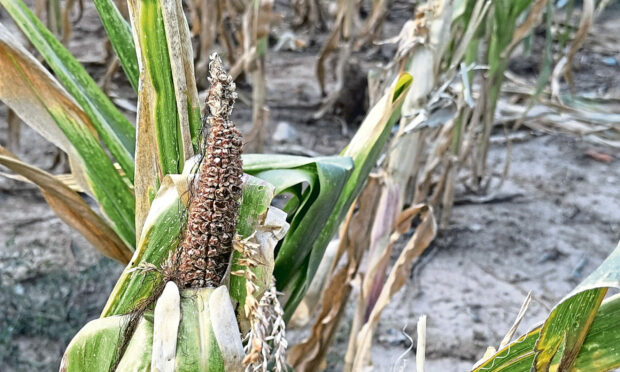All of south-west England is now in drought following some of the driest European conditions in nearly 90 years, sparking further fears about a shortage of farm fodder over the winter months and price volatility.
Yesterday we broke the news that winter forage supplies are already being eaten in some parts of Scotland, including the north-east.
The news of the drought conditions down south adds further uncertainty to an industry which is being hit by dry growing conditions and spiralling costs.
Yesterday saw the Wessex area – which includes Bristol, Somerset, Dorset, south Gloucestershire and parts of Wiltshire – being declared in drought status.
Drought in England causing shortage
The move means 11 of the 14 Environment Agency areas in England are now in drought status.
While the Wessex area has had some rainfall over the last two weeks, it has not been sufficient to compensate for the long dry period in recent months.
It comes after the driest July since 1935 across England, with monthly rainfall totals for the majority of river catchments classed as exceptionally low for the time of year.
The extremely hot, dry conditions have hit crops, fuelled wildfires and led to a large increase in demand for water.
But water firms have come under fire for high rates of water leaking from the network; as well as for profits and executive pay, and for sewage pouring into rivers and the sea in the recent heavy rainfall.
Experts have said sufficient rainfall over the autumn and winter would replenish rivers, lakes, groundwater and reservoirs to normal levels by spring, but planning should begin now on how to manage shortfalls in 2023 if the coming months are dry.
Drought is also gripping much of Europe, fuelling forest fires, drying up rivers and devastating crops.
Europe under drought warning
Almost half of the 27-nation EU is under drought warning, with conditions worsening in Belgium, France, Germany, Hungary, Ireland, Italy, Luxembourg, the Netherlands, Portugal, Romania and Spain.
In Scotland, we reported that an SAC Consulting survey found that those already supplementing with winter forage tend to be in areas with lighter sandy soils lacking grass growth in recent weeks and had poor-quality second cut silage.
In a few cases, farmers cut fertiliser rates due to costs, but then found themselves short of grass.
SAC Consulting’s ruminant nutritionist Mary Young said: “While we found 80% of our clients haven’t touched their winter forage, the 5-15% who have clearly face a reduction in their reserves that will require additional forward planning ahead of the winter.”

Conversation